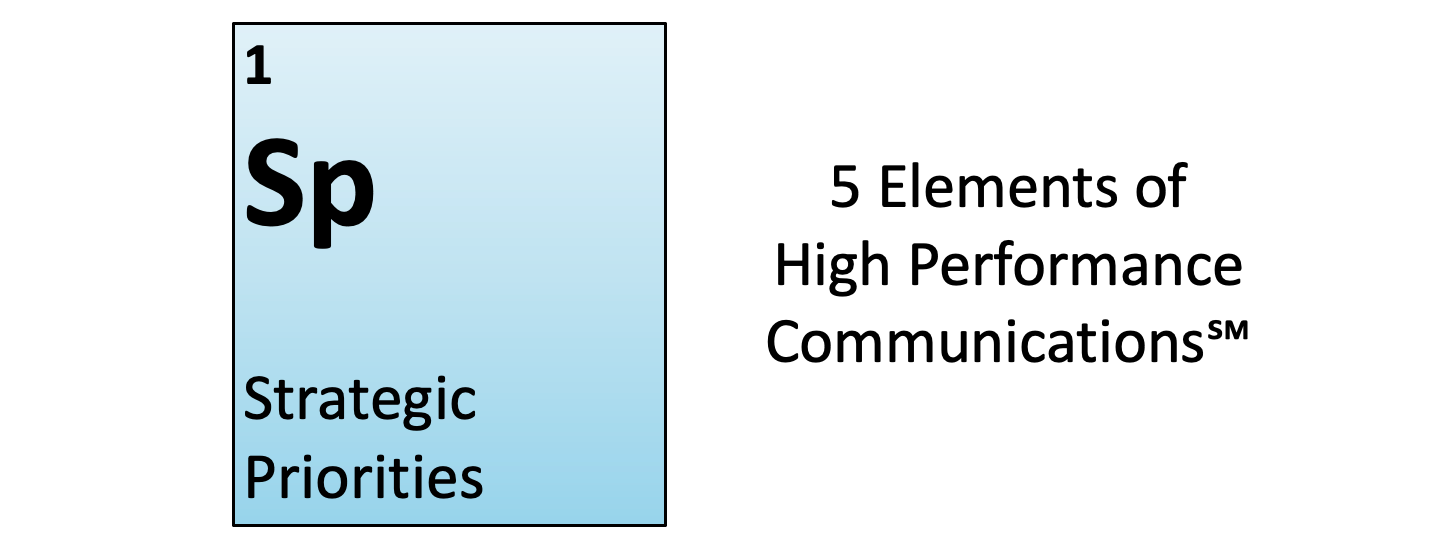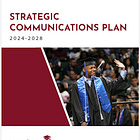No, You’re Not Just 'Winging It'
The best local governments communicate with intention. That starts with connecting messages to clear strategic priorities
Editor’s Note: This is the second in a six-part series on the elements of High Performance Communications, which we introduced last week. Going forward, each installment explores one essential ingredient for building credibility, trust, and clarity in local government communication, starting with the cornerstone: Strategic Priorities.
To ensure this content reaches the people who need it most, none of the newsletters in this series will be paywalled. If you find it useful, feel free to share it with colleagues and team members working to raise the bar in their own organizations.
In local government, everyone’s busy. Projects, meetings, service requests, social media comments, and inboxes full of surprises. But the question isn’t whether you’re working hard.
The question is: Are you working in alignment?
That’s the first element of High Performance Communication: Strategic Priorities. It’s the foundation everything else builds on. Because if your messages aren’t tied to your organization’s goals, you’re just making noise.
Or, worse yet, it feels like your organization is just making stuff up as it goes along.
And “winging it” is never a good look for government.
Strategy isn’t a slogan
It’s easy to mistake “strategic communication” for a splashy video recap or a new tagline slapped on your city’s homepage. But real strategic communication starts long before you hit send.
It begins with the priorities set by your elected leadership and executive team. Those priorities should guide not just what you say, but how you say it—and where you spend your time, your budget, and your best ideas.
If you’re not familiar with your city’s vision and mission, or if they’re gathering dust in a binder somewhere 😬, it’s time to have a look.
Your communications plan should support your strategic plan
The best communications programs aren’t stand-alone. They’re scaffolding. They support and reinforce what the organization is trying to accomplish. They amplify its purpose. They make the invisible visible.
That’s what makes Claire Noble’s strategic communication plan in Eagle County, Colorado, so effective. Yes, it included messaging and media strategies. But it also made a clear connection to the county’s larger goals: supporting the workforce, preserving the ecosystem, and fostering public input. It recognized that half the job wasn’t talking, it was listening.
Same goes for Anthony Tosie’s communications plan at Northwest ISD. His work isn’t a sidebar to the district’s growth challenges, it’s an integral component of how the district earns trust while managing them.
Mission gives you permission
When communications teams understand the agency’s mission, they gain the confidence to speak boldly and clearly. That’s how you can stand in front of a skeptical audience and say, “Yes, in your backyard.” It’s not out of defiance, but because you’re aligned with the public good as articulated by elected officials.
Mission-focused communication helps you frame difficult projects around outcomes that matter. It’s not just about explaining the what. It’s about making the why meaningful.
And your why should always connect to real quality-of-life outcomes: Safer neighborhoods. Faster commutes. Clean water. Economic opportunity. Resilient infrastructure.
These aren’t abstractions. They’re the everyday outcomes that show whether your community is moving forward with intention or just reacting to the latest crisis.
Putting strategy to work
Your strategic plan shouldn’t sit on a shelf. It should drive decisions. That’s what makes the plan in Manassas, Virginia, so impressive. It links resident input, council priorities, and departmental goals all the way through to the city’s budget process.
That kind of clarity means communications staff are more than storytellers. They’re stewards of strategy.
Practical takeaways:
Ask yourself and your team:
Are we aligning communications efforts with our strategic plan’s top priorities?
Do we talk about our mission and vision in a way that resonates with staff and the public?
Can we clearly connect our content to community outcomes?
Are we helping departments translate their work into strategic narratives?
Looking ahead
Next week, we’ll dive into Element 2: Organizational Leadership and why top-level buy-in isn’t just helpful, it’s essential. And why communications professionals must be at the table when the strategy is set. The role demands it.
But for now, take 10 minutes to open your city’s strategic plan. Find the priorities. Then look at your last five communications projects. Are they aligned?
If not, it’s time to adjust the frequency.
Let’s build clarity into everything we do.
Let’s play the long game.
Onward and Upward.
Related reads on the road to High Performance
Claire. Anthony. Manassas. These folks didn’t just talk strategy. They lived it.









